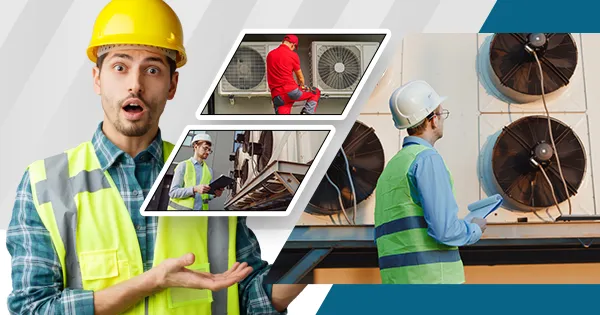Cleanliness in schools is of utmost importance for the health and well-being of students and staff. A clean and hygienic environment not only prevents the spread of germs and illnesses but also creates a conducive atmosphere for learning. Research has shown that a clean school environment can have a positive impact on student attendance, performance, and overall academic success. In this article, we will explore the importance of proper cleaning protocols in schools, the role of shared spaces in spreading germs, the benefits of regular cleaning routines, the science behind effective cleaning and disinfecting, the top germ hotspots in schools and how to clean them, the advantages of using environmentally friendly cleaning products, the role of teachers and staff in maintaining cleanliness, teaching students proper hygiene habits, the impact of clean shared spaces on student attendance and performance, and best practices for implementing and maintaining effective cleaning protocols in schools.
The Importance of Proper Cleaning Protocols in Schools
Schools are high-traffic areas where students, teachers, and staff spend a significant amount of time. This makes them prone to the spread of germs and illnesses. Proper cleaning protocols are essential to maintain a clean and healthy environment in schools. These protocols include regular cleaning and disinfecting of surfaces, proper waste management, and maintaining hygiene practices such as handwashing.
Secondly, proper cleaning protocols create a clean and inviting atmosphere for students and staff. A clean school environment promotes a sense of pride and ownership among students, leading to increased motivation and engagement. It also improves air quality, which can have a positive impact on respiratory health.
Understanding the Role of Shared Spaces in Spreading Germs
Shared spaces in schools, such as classrooms, hallways, cafeterias, and restrooms, are hotspots for the spread of germs. Germs can be easily transmitted through direct contact with contaminated surfaces or through respiratory droplets when an infected person coughs or sneezes.
Classrooms are particularly prone to germ transmission due to the close proximity of students and the frequent use of shared materials such as desks, chairs, and books. Hallways and cafeterias are high-traffic areas where students come into contact with various surfaces and each other. Restrooms, if not properly cleaned and maintained, can become breeding grounds for bacteria and viruses.
It is important to understand how germs spread in shared spaces in order to implement effective cleaning protocols. Regular cleaning and disinfecting of high-touch surfaces such as doorknobs, light switches, desks, and tables can significantly reduce the risk of transmission.
How Do Regular Cleaning Routines Help Prevent the Spread of Illness?
Regular cleaning removes dirt, dust, and debris from surfaces, making them less hospitable for germs to thrive. Disinfecting, on the other hand, kills or inactivates germs on surfaces, further reducing the risk of transmission.
It is important to note that cleaning and disinfecting are two different processes. Cleaning refers to the removal of visible dirt and debris from surfaces using soap or detergent and water. Disinfecting, on the other hand, involves using chemicals or disinfectants to kill or inactivate germs on surfaces.
The Science Behind Effective Cleaning and Disinfecting
Understanding the science behind effective cleaning and disinfecting is essential for schools to choose the right cleaning products and techniques for different surfaces.
Cleaning involves the physical removal of dirt, dust, and debris from surfaces. This can be done using soap or detergent and water. Soap works by breaking down the oils and fats that hold dirt and germs on surfaces, allowing them to be washed away with water.
Different surfaces require different cleaning products and techniques. For example, hard surfaces such as desks and tables can be cleaned and disinfected using a solution of bleach and water. Soft surfaces such as carpets and upholstery may require steam cleaning or specialised disinfectants.
It is important to follow the instructions provided by the manufacturer when using cleaning products and disinfectants. This includes using the correct dilution ratios, allowing sufficient contact time for the disinfectant to work, and ensuring proper ventilation during use.
The Top Germ Hotspots in Schools and How to Clean Them?
Identifying the most common areas where germs thrive in schools is crucial for effective cleaning and disinfecting. Some of the top germ hotspots in schools include:
✔️ Desks and Tables
Students spend a significant amount of time at their desks or tables, making them prone to germ transmission. Regularly cleaning and disinfecting these surfaces can help prevent the spread of illnesses.
✔️ Doorknobs and Light Switches
These high-touch surfaces are frequently used by students and staff, making them potential sources of germ transmission. Regularly cleaning and disinfecting these surfaces can help reduce the risk of transmission.
✔️ Restrooms
Restrooms can become breeding grounds for bacteria and viruses if not properly cleaned and maintained. Regular cleaning and disinfecting of toilets, sinks, faucets, and door handles is essential to prevent the spread of germs.
✔️ Cafeterias
Cafeterias are high-traffic areas where students come into contact with various surfaces and each other. Regularly cleaning and disinfecting tables, chairs, trays, and utensils can help prevent the spread of germs.
To effectively clean these germ hotspots, it is important to use the right cleaning products and techniques. Surfaces should be cleaned with soap or detergent and water to remove visible dirt and debris. After cleaning, a disinfectant should be applied to kill or inactivate any remaining germs. It is important to follow the instructions provided by the manufacturer when using cleaning products and disinfectants.
The Benefits of Using Environmentally Friendly Cleaning Products
Using environmentally friendly cleaning products in schools has numerous advantages. Firstly, these products are safer for students, staff, and the environment. Traditional cleaning products often contain harsh chemicals that can cause respiratory irritation, allergies, or other health issues. Environmentally friendly cleaning products, on the other hand, are made from natural ingredients that are less harmful to human health.
Secondly, using eco-friendly cleaning products reduces the environmental impact of schools. Traditional cleaning products often contain chemicals that can pollute waterways and contribute to air pollution. By using environmentally friendly alternatives, schools can reduce their carbon footprint and contribute to a healthier planet.
Finding and using environmentally friendly cleaning products in schools is relatively easy. Many manufacturers now offer eco-friendly alternatives to traditional cleaning products. These products are often labelled with certifications such as Green Seal or EcoLogo, which indicate that they meet certain environmental standards.
When using environmentally friendly cleaning products, it is important to follow the instructions provided by the manufacturer. This includes using the correct dilution ratios, allowing sufficient contact time for the product to work, and ensuring proper ventilation during use.
The Role of Teachers and Staff in Maintaining Cleanliness in Shared Spaces
Teachers and staff play a crucial role in maintaining cleanliness in shared spaces in schools. They are responsible for ensuring that classrooms, hallways, cafeterias, and other areas are kept clean and hygienic.
Involving teachers and staff in cleaning efforts not only lightens the workload but also creates a sense of ownership and responsibility. By actively participating in cleaning routines, teachers and staff can lead by example and instil good hygiene habits among students.
It is important to train and educate teachers and staff on proper cleaning protocols. This includes providing them with information on the importance of cleanliness, teaching them how to properly clean and disinfect surfaces, and providing them with the necessary cleaning products and equipment.
Regular communication and feedback are also essential for maintaining cleanliness in shared spaces. Teachers and staff should be encouraged to report any cleanliness issues or concerns so that they can be addressed promptly.
Creating a Culture of Cleanliness: Teaching Students Proper Hygiene Habits
Teaching students proper hygiene habits is essential for creating a culture of cleanliness in schools. By instilling good hygiene practices at an early age, schools can help students develop lifelong habits that will protect their health and well-being.
Incorporating hygiene education into the curriculum is one way to teach students proper hygiene habits. This can be done through interactive lessons, demonstrations, and hands-on activities. Topics such as handwashing, respiratory etiquette, and personal hygiene should be covered regularly.
Schools can also create visual reminders to reinforce good hygiene habits. Posters and signs can be placed in classrooms, restrooms, and other shared spaces to remind students to wash their hands, cover their mouths when coughing or sneezing, and maintain personal hygiene.
It is important to involve parents and guardians in teaching students proper hygiene habits. Schools can provide resources and information to parents on the importance of cleanliness and how they can reinforce good hygiene practices at home.
The Impact of Clean Shared Spaces on Student Attendance and Performance
Clean shared spaces in schools have a direct impact on student attendance and performance. A clean and hygienic environment reduces the risk of illness, leading to fewer absences among students and staff.
When students are absent due to illness, they miss out on valuable learning opportunities. This can result in gaps in knowledge and skills, which can affect their academic performance in the long run. By maintaining cleanliness in shared spaces, schools can help reduce the spread of illnesses and improve student attendance.
Studies have also shown a correlation between cleanliness and academic performance. A clean school environment promotes a sense of pride and ownership among students, leading to increased motivation and engagement. It also creates a conducive atmosphere for learning, free from distractions and health hazards.
Best Practices for Implementing and Maintaining Effective Cleaning Protocols in Schools
Implementing and maintaining effective cleaning protocols in schools requires careful planning and coordination. Here are some best practices to consider:
✔️ Develop a Cleaning Schedule
Create a schedule that outlines when each area of the school should be cleaned and disinfected. This will ensure that all surfaces are regularly maintained.
✔️ Provide Training
Train teachers, staff, and custodial personnel on proper cleaning protocols. This includes teaching them how to properly clean and disinfect surfaces, use cleaning products safely, and follow hygiene practices.
✔️ Use Appropriate Cleaning Products
Choose cleaning products that are effective against a wide range of germs and safe for use in schools. Consider using environmentally friendly alternatives to reduce the environmental impact.
Establish Clear Responsibilities
Clearly define the roles and responsibilities of teachers, staff, and custodial personnel in maintaining cleanliness. This will ensure that everyone is aware of their responsibilities and can contribute to a clean and hygienic environment.
✔️ Regularly Communicate and Provide Feedback
Maintain open lines of communication with teachers, staff, and custodial personnel. Encourage them to report any cleanliness issues or concerns so that they can be addressed promptly.
✔️ Involve Students
Teach students proper hygiene habits and involve them in cleaning efforts. This will create a sense of ownership and responsibility among students and instil good hygiene practices at an early age.
✔️ Regularly Evaluate and Update Protocols
Continuously evaluate the effectiveness of cleaning protocols and make necessary adjustments. Stay updated on the latest research and recommendations regarding cleaning and disinfecting practices.
In conclusion, proper cleaning protocols are essential for maintaining a clean and healthy environment in schools. By following proper cleaning procedures, schools can prevent the spread of germs and illnesses, create a conducive atmosphere for learning, and improve student attendance and performance. Understanding the role of shared spaces in spreading germs is crucial for effective cleaning and disinfecting. Regular cleaning routines help prevent the spread of illness by removing dirt and debris from surfaces and killing or inactivating germs. Prioritising cleanliness in schools is crucial for the health and well-being of students and staff. By implementing proper cleaning protocols, schools can create a clean and hygienic environment that promotes learning and academic success.







